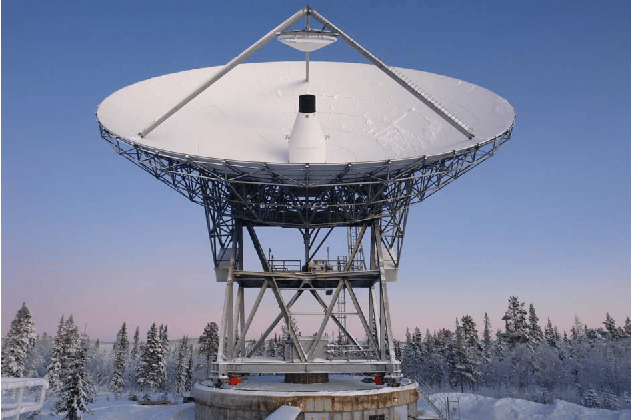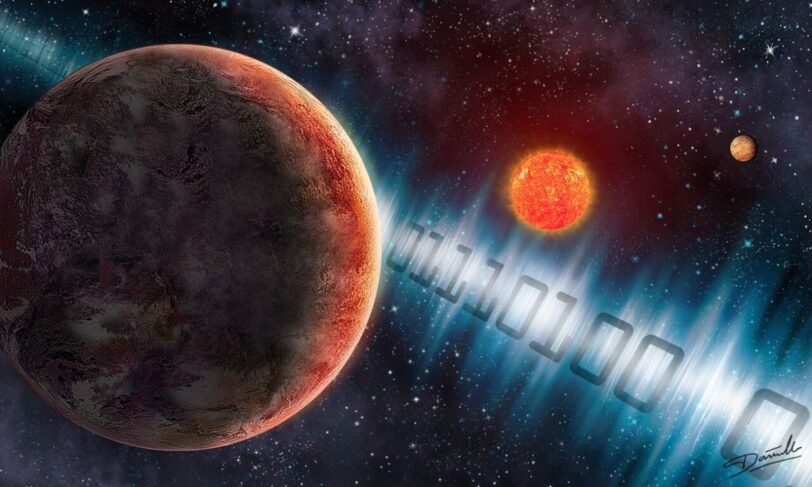Scientists and artists have banded together to beam coded radio transmissions toward a star that has a potentially habitable planet, just 12.4 light-years from Earth.
“Sónar Calling GJ273b” is the latest effort to communicate with aliens, 43 years since the first attempt was made using the 1,000-foot Arecibo radio telescope in Puerto Rico.
The “Sónar Calling” messages were sent on three successive days, Oct. 16-18, from the 32-meter EISCAT radio antenna in Tromsø, Norway, just inside the Arctic Circle. Each transmission was directed at peak power of 2 megawatts toward a red dwarf star known as GJ273, or Luyten’s Star, in the constellation Canis Major.

Astronomers say Luyten’s Star harbors a planet that’s more than twice as massive as Earth, in an orbit where water could conceivably exist in liquid form. “Sónar Calling” aims to communicate with any radio-savvy life forms on that planet, called GJ273 b.
The effort is being undertaken by the organizers of Spain’s Sónar music festival in Barcelona, the Institute of Space Studies of Catalonia, and METI International, a San Francisco-based research organization that focuses on the issue of messaging extraterrestrial intelligence.
The message contains a tutorial for its recipients, said Douglas Vakoch, METI International’s president.
“METI’s mathematical and scientific tutorial for ‘Sónar Calling GJ273b’ includes innovative features like a ‘cosmic clock’ that lets extraterrestrials confirm that their understanding of time from our scientific message maps onto the passage of time they can observe throughout the transmission itself,” Vakoch told GeekWire in an email.
The tutorial tries to explain the notion of radio frequency by sending signals as binary code at two frequencies, 929.0 MHz and 930.2 MHz. The code describes those frequencies in mathematical terms.

EISCAT’s antenna broadcast the binary code three times on each of the three days at a rate of 125 bits per second, adding up to a total transmission time of 33 minutes, Vakoch said. Each time, the cosmic-clock setting was changed to reflect the time of transmission.
The message also included 33 musical pieces, each lasting 10 seconds, which were commissioned for the project as a tribute to the Sónar festival. The contributors include sound artist Holly Herndon, French composer Jean-Michel Jarre and the experimental electronic-music duo Matmos.
“We will turn the EISCAT transmitter into a musical instrument, sending basic melodies by transmitting pulses at a series of different radio frequencies that maintain the same sort of intervals between one another that we see in the intervals between musical notes,” he said.
It might sound strange to try sending messages to the aliens in the form of music, but there are precedents for that.
Are such transmissions detectable? And if so, is it wise to send them? That’s been a subject of debate among researchers focusing on the search for extraterrestrial intelligence, or SETI, for many years.
Assuming there is someone out there listening to the sounds of “Sónar Calling GJ273b,” we’ll have 25 years to find out if they reply via radio. But if there are battlewagons, that’d almost certainly take longer.


